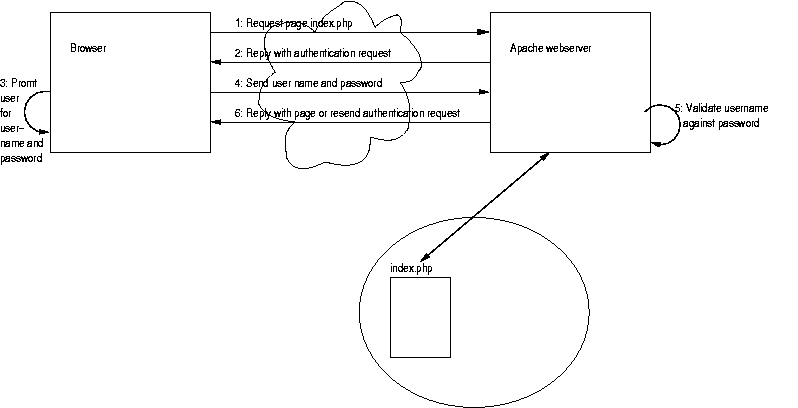|
|
|
This is the method used for the Intranet at IT-C.
It may be triggered by a server-script (e.g. PHP) or directly by the Web server (e.g. Apache or IIS).
Here is the general picture:

index.php from the web-server
WWW-Authenticate: Basic realm="IT University Intranet"HTTP/1.0 401 Autherization Required
WWW-Authenticate: Basic realm="IT University Intranet" HTTP/1.0 401 Authorization Required <body> <h1>Invalid login/password</h1> You must provide a valid login and password to enter this site. <p> <hr> <address>Apache/1.3.20 Server at www.it-c.dk Port 80</address> </body> |
Cancel or e.g. fails too many times, the rest of the authentication page is
shownOk, the user name and password are send
(by default in plain text) to the web-server, which is then validated
|
|
|